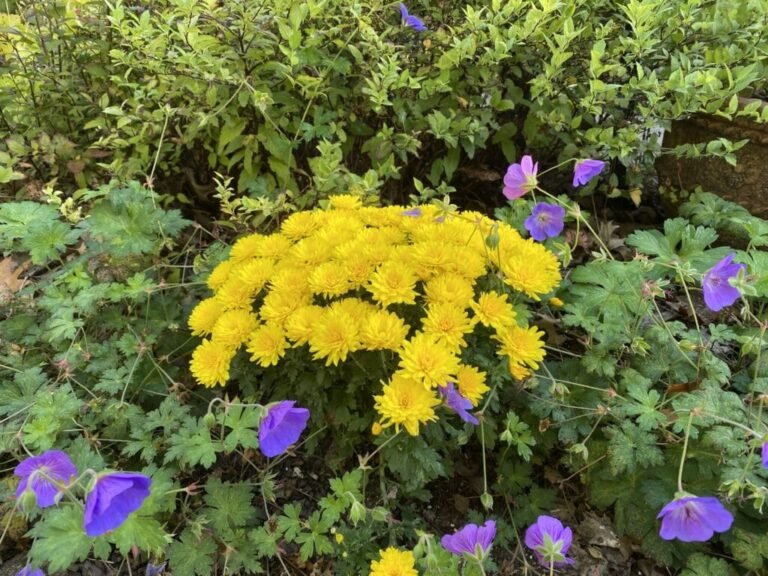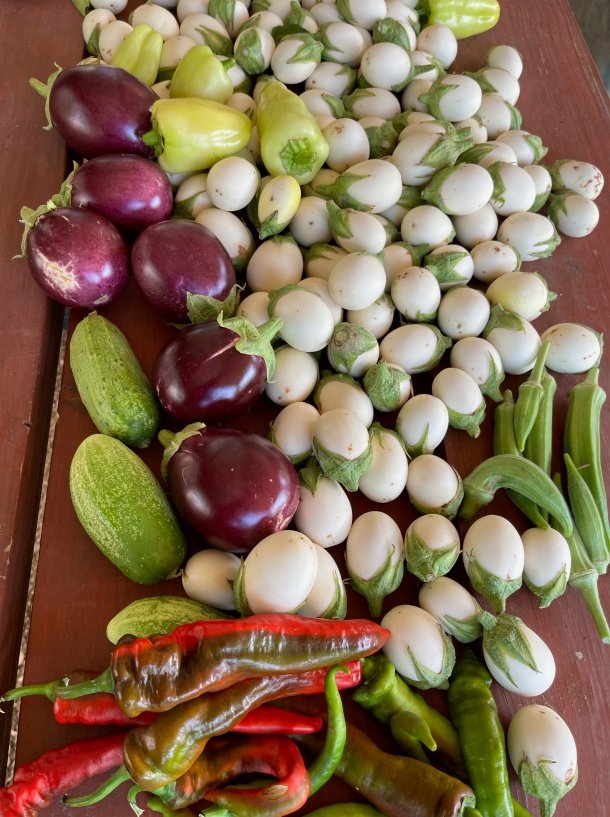
July 22, 2025

Just a few days ago, with the temperature hovering around 93 degrees, I decided to run the sprinkler system in my raised edible bed. It was a hot afternoon and overspray from the system felt good hitting me in the face, so I sat down on a bench and waited for it to complete the cycle. Interestingly, something in the blue blooming salvia bed just to my right side kept catching my eye. Curious to figure out “why” a single, and very lovely, pale pink flower was peeking out at me, I got up, walked a few steps and stared in amazement.
Gently pushing back some of the ‘black and blue’ salvias that had been growing in that spot for over 5 years, was the most unexpected sight. Droplets from the sprinkler that had just watered that area were gracefully clinging to the petals and seemed to be inviting me to come closer and take a look. What was this mysterious plant that I had never even noticed in the 19 years we’ve lived here?
After taking a few photos with my iPhone and then doing a quick plant search, the answer was revealed to me. I was pleased to learn that the botanical name Lycoris, is from plants in the Amaryllis family. Some of their common names, however (resurrection flower, surprise lily and magic lily) refer to the trumpet-shaped blooms that resemble lilies. Also known as ‘naked ladies’ for the absence of leaves, these striking lilies start blooming around the end of July. She almost looked like a flamingo standing stiff-legged in my garden bed. I wanted to learn more about her!
Lycoris includes around 20 different species found in China, Japan and a few other Asian countries. However, the tall, pink flowered Lycoris x squamigera is the most common in American gardens. If you are interested in growing this lovely, delicate pink lady, here are a few tips to get started:
*The surprise lily is a perennial bulb in the Amaryllis family and is the hardiest of all the plants in the Lycoris species.
*Bulbs are about 3 inches in diameter with long necks that can persist for many years once established.
*Lycoris prefer full sun to partial shade.
*When planting, bury bulbs to a depth of 8 to 12 inches, spacing them 6 inches apart.
*They grow best in well-drained, fertile soils.
*Foliage emerges in late winter to early spring. Silvery gray greenish strap-like leaves measure 12 inches long and 1 inch wide. They grow in clumps.
*Foliage dies away in late spring followed by the late summer “surprise” lily that emerges like magic and produces 5-7 four-inch pale pink trumpet-like blooms atop the 2-foot tall stalks.
*Butterflies and hummingbirds are attracted to the fragrant flowers.
Now that I’ve had the pleasure of meeting this remarkable lady, I’ll be especially watchful next spring while awaiting her return!
Linda Alexander, Dallas County Master Gardener Class of 2008





